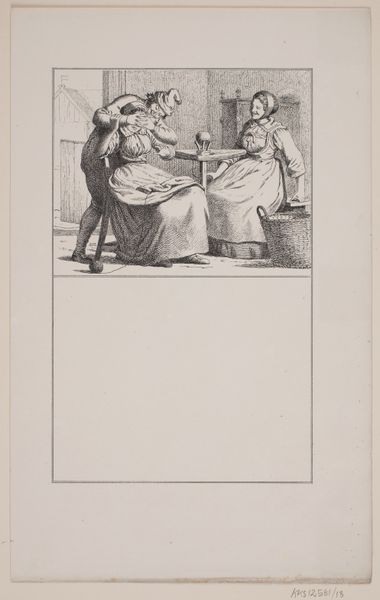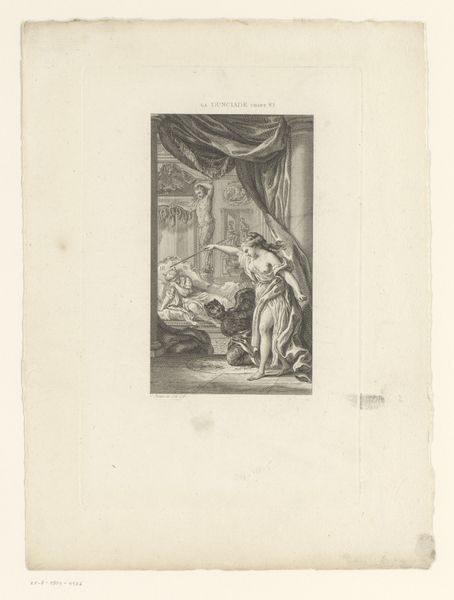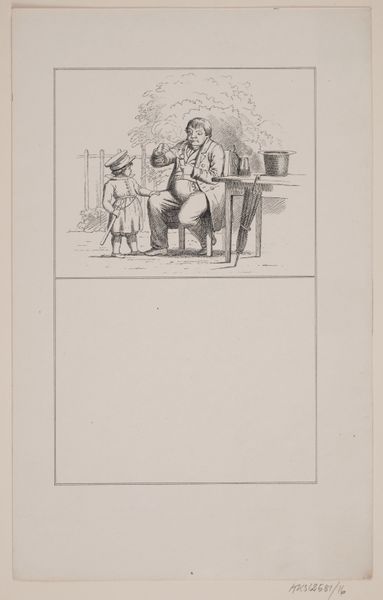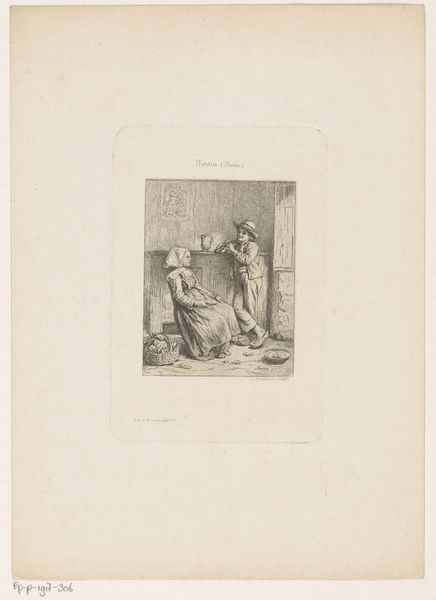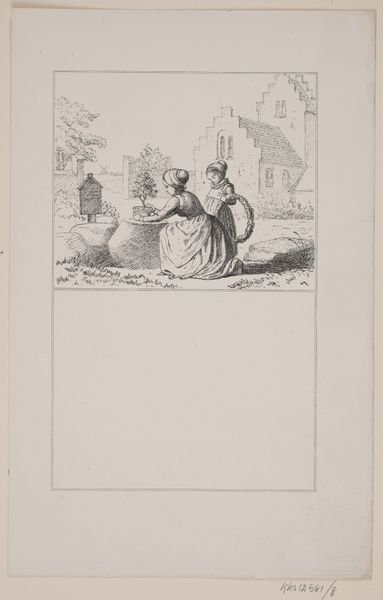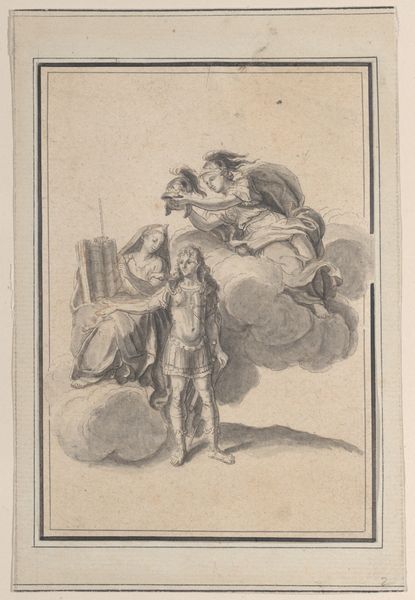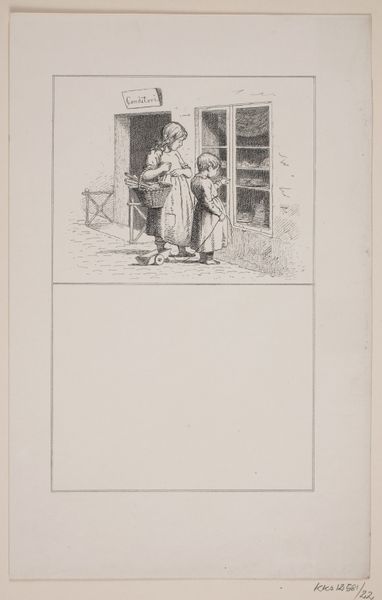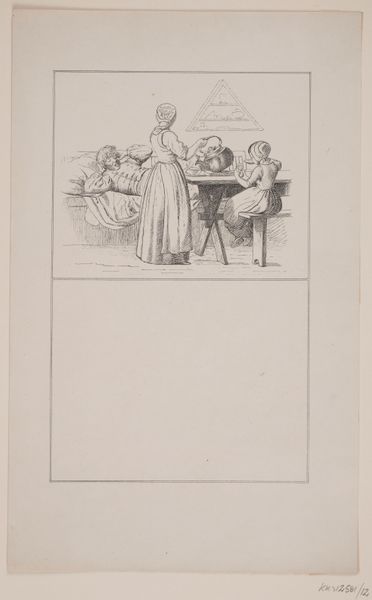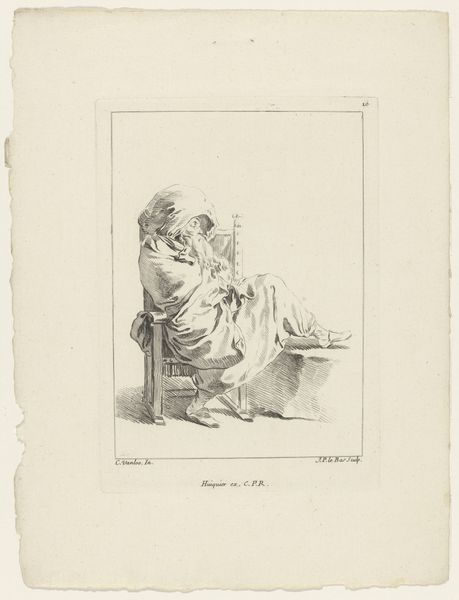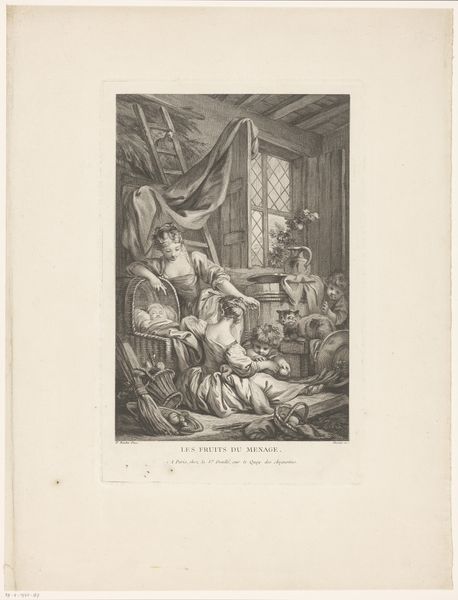
Dimensions: 262 mm (height) x 165 mm (width) (brutto)
Editor: We’re looking at “The New Guest,” a lithograph, etching and drawing by Adolph Kittendorff, created in 1862. It has such a quiet and intimate feeling, depicting a mother and child near a crib. What strikes you most about this piece? Curator: I am immediately drawn to the formal relationships within the composition. Notice the stark contrast between the meticulously detailed upper register, rendered with fine, almost frenetic lines, and the expansive void occupying the lower half. This deliberate imbalance directs our gaze, forcing a concentrated focus on the familial scene above. Editor: So the blank space isn’t just…blank? It serves a purpose? Curator: Precisely. The emptiness functions as a counterweight, a spatial pause that amplifies the activity within the depicted interior. Consider how the artist employs line weight: thin, delicate lines delineate the figures and furnishings, creating a sense of fragility and transience, particularly when set against the relative stability suggested by darker hatching near the window. How might we read this, in terms of signification? Editor: I guess it directs focus… Curator: Indeed. Also, look at the window. What of it? Editor: It seems to be a secondary light source, but it is flat like the wall. The foreground action has rounded, though soft edges. It gives the whole a two-dimensional quality. Curator: Very good observation. Now, reflect on Kittendorff's method of placing such varying dimensions so close to one another, while still maintaining visual harmony. The composition guides us to think about this. Editor: I see your point! It's a quiet but powerful arrangement of space and line. Curator: Precisely. These visual choices invite prolonged contemplation of this family’s intimate tableau, wouldn’t you agree?
Comments
No comments
Be the first to comment and join the conversation on the ultimate creative platform.
